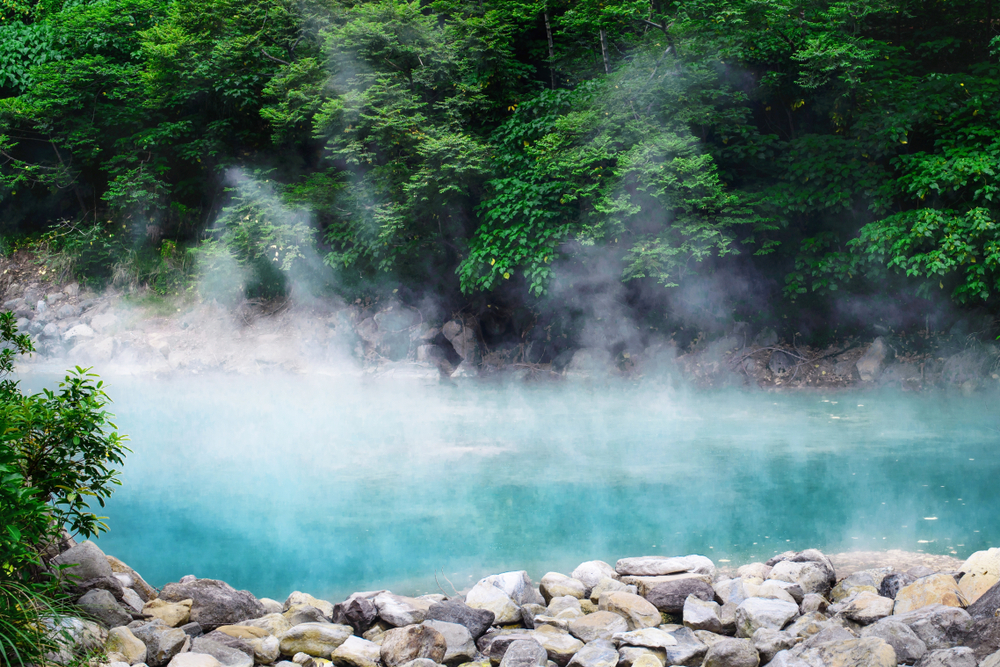Nepal's Buried Treasure: Unearthing Its Geothermal Power

Nepal, May 8 -- Nepal's hot water springs have great potential as a renewable geothermal energy source that generates low levels of greenhouse gases. While hydropower generation can fluctuate with seasonal water availability and solar power depends on weather conditions, geothermal resources provide stable baseload power throughout the year.
Additionally-without entirely shifting focus to large hydropower projects, which cause significant ecological disruption-or to hydrogen systems, which, although promising as energy carriers, are not yet viable at a large scale-Nepal must parallelly prioritise revitalising hot springs in remote, economically disadvantaged regions. The local communities in such areas can benefit from improved energy access and associated tourism development, creating a model similar to successful implementations in countries like Japan and Iceland.
Assessment of geothermal resources
The Water and Energy Commission Secretariat (WECS) study on identifying and developing hot springs recognised 41 sites meeting threshold parameters (discharge and temperature), which is noteworthy for geothermal energy development. According to the study, Nepal can anticipate that a hot spring with water temperature of 70 degrees Celsius and flow rate of one litre per second would theoretically yield approximately 188.37 kilowatts of electrical power at perfect efficiency. However, practical applications would achieve lower outputs.
An example of Tatopani Bazar in Sindhupalchok district can be taken from the various hot springs assessed. Nepal can direct resources toward developing this spring, which stands out with its recorded temperature of 51.6 degrees Celsius and an estimated power potential of 376 kilowatts. The study estimates an investment cost of approximately Rs86 million for developing this site. Besides, Nepal can adopt a dual-purpose approach to Tatopani, which has long been recognised as an eminent location for Balneotherapy (a type of hydrotherapy). This site can be developed to serve both wellness tourism and energy production simultaneously, creating a sustainable economic model for the region.
Technological implementation
Nepal can utilise existing natural hot springs rather than investing in traditional geothermal plants that require drilling deep into the Earth's crust, which reduces initial exploration costs.
According to the WECS report, Nepal has the potential to produce electricity by harnessing hot springs through the introduction of cold water. This process creates a temperature differential that can be transformed into electric power via binary cycle technology—a method already validated in comparable geological contexts globally. As outlined in the research, this binary cycle approach involves transferring thermal energy from geothermal waters to a secondary liquid with a reduced evaporation threshold. Upon heating up, this second substance transforms into gas and propels turbines to create electricity. Such an innovative solution fits well with the moderately heated reservoirs present within Nepal’s landscape.
The conversion efficiency for these systems usually falls within the range of 30% to 50%, as indicated by international standards referenced in the WECS report. Therefore, the anticipated 376 kW potential at Tatopani Bazar might realistically equate to around 150-188 kW of operational output—sufficient to supply electricity to numerous rural homes equipped with lighting fixtures and basic electronic devices. Currently, each kilowatt of hydropower generally serves about four to five houses in remote regions, suggesting that an 180 kW geothermal facility could potentially electrify approximately 750 rural residences.
Learning from global applications
Nepal can draw valuable lessons from countries successfully utilising mature geothermal energy. In Iceland's capital, Reykjavik, an extensive geothermal district heating network keeps homes warm throughout harsh winters. This system heats 90 percent of the buildings in Reykjavik. Similarly, Italy's historic Larderello region and New Zealand's Wairakei geothermal field station demonstrate successful electricity generation from geothermal resources.
Nepal might consider adopting strategies akin to those of Japan, a country with comparable geological features that have led to the development of an integrated system. This system uses geothermal resources not only for generating electricity but also for powering district heating networks and supporting onsen (hot spring) tourism. Expanding beyond just electrical production, Nepal could utilize geothermal energy for various applications such as maintaining greenhouses throughout the year, boosting fish farming in aquaculture, and driving industrial activities including food drying and milk pasteurization.
Agricultural uses hold significant potential for Nepal. The nation could employ geothermal energy to heat greenhouses throughout winter, thereby prolonging the growth period of lucrative crops and enhancing food security in isolated mountainous areas where traditional heating solutions are either expensive or inaccessible.
Addressing development challenges
At present, the expense associated with producing electricity from geothermal sources exceeds that of Nepal’s existing hydropower initiatives, hindering rapid widespread implementation. Nevertheless, an extensive long-term evaluation of costs versus benefits might validate the upfront expenditure when contrasted with traditional options. Bridging the skill gap in specialized technical knowledge will be essential. Such progress can be facilitated via global collaborations and focused training programs.
Considering the intricacies involved in binary cycle systems, Nepal would benefit from investing in educational programs and seeking out technology transfers to develop essential engineering expertise for effective project execution. Comprehensive feasibility assessments must be carried out at the prime locations pinpointed in the WECS report. The approach outlined in the WECS study could act as a nationwide model for upcoming investigations and evaluations of prospective geothermal assets.
Creating standardized procedures for measurement, analysis, and feasibility assessments will maintain uniformity as the industry progresses. By sharing this information with municipal authorities, it can promote tourism-driven growth while facilitating efficient management of resources. Consequently, as worldwide attention towards renewable energy increases alongside technological advancements, Nepal has an opportunity to leverage its geothermal hot springs, positioning them as a significant component in its energy landscape. This approach supports both national efforts toward self-sufficiency in energy and eco-friendly practices.
Post a Comment for "Nepal's Buried Treasure: Unearthing Its Geothermal Power"